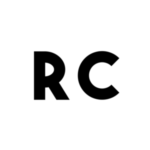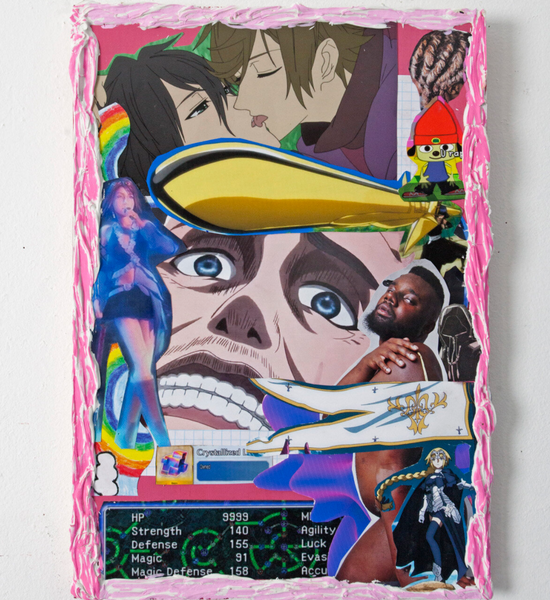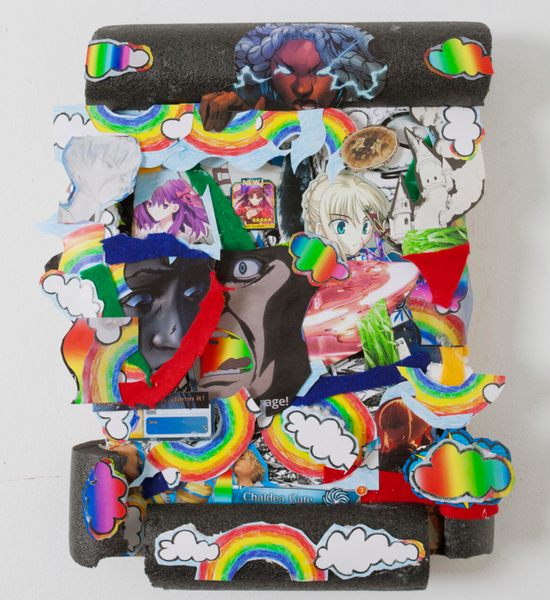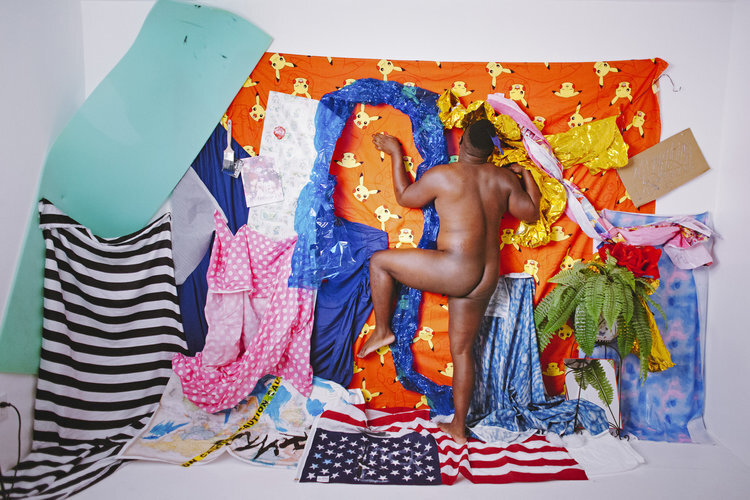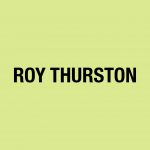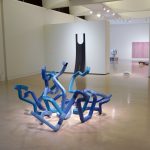Joshua Hashemzadeh : Rakeem I’ve known you for some time and have gotten to see how you balance an artistic practice as a photographer with your curatorial involvement with Monte Vista Projects, and your professional life as a gallerist. I think you’d agree that it can be rewarding being able to shift between things like this, but oftentimes aspects of each of these can conflict and sometimes feel problematically opposed. I think in light of the growing civil unrest in the US and the ongoing pandemic, “community” has really come under fire. Many galleries have had to think deeply about the economic and social sustainability of their existing programs and how they affect the communities around them. I’m wondering how you think commercial galleries may be affected going forward? And what institutional practices may help or hinder the artist communities within Los Angeles?
라킴, 저는 작가님과 알고 지내면서 작가님이 포토그래퍼로서, Monte Vista Projects의 큐레이터로서, 그리고 갤러리스트로서의 어떻게 일의 균형을 유지해왔는지도 알게 되었습니다. 이렇게 여러 역할을 오가는 게 가능하다는 데서 얻는 충족감이 있다는 것에 동의하실 거라 생각합니다. 하지만 각 부분이 서로 마찰을 일으키는 경우가 종종 있을 테고, 또 때로는 문제가 될 정도로 충돌하기도 할 텐데요. 점차 커져가는 미국 내 소요사태에 팬데믹까지 겹치면서 “공동체”라는 개념이 많은 공격에 노출되는 결과가 나타난 것 같습니다. 많은 갤러리들은 기존에 운영하던 프로그램이 경제적으로 그리고 사회적으로 얼마나 지속가능한지, 갤러리를 둘러싼 공동체들에는 어떠한 영향을 미치는지에 대해 깊이 고민을 해야 하는 상황에 놓였습니다. 이러한 상황이 향후 상업 갤러리들에게 어떻게 영향을 미칠까요? 그리고 로스앤젤레스의 예술가 공동체에게 도움이 되거나 저해요소가 될 제도적 움직임으로는 무엇이 있을까요?
Rakeem Cunningham : Thank you for all of the questions Josh. I appreciate being invited to do this and to have been included in our group show, Yesterday- Tomorrow. It’s been an interesting time being an artist, curator, and gallerist. You get to see different vantage points and viewpoints. But the one thing that I think has been almost universal that I love and respect is the way organizations are guiding their decisions with empathy and putting the health of their workers and staff first. I just hope that people actually do the work to unlearn problematic behaviors, practices, and dismantle systems that disadvantage people of color, queer artists, and women artists. I hope the system really starts over. I’m not a huge fan of how things “were” before. As a queer black artist, I’ve constantly felt like I’ve been “othered.” And that needs to change. White artists are not the default. I also hope that galleries and institutions move beyond posting a black square. Galleries and institutions most likely feel uncomfortable navigating this, and they should be. Hire black curators, black artists, black gallerists, but listen to them. Put black people on your boards and sell to black collectors. That’s a step in the right direction. Not just to write checks and move on, but to actually make institutional changes across all facets of the art world.
질문해주셔서 고맙습니다. 대담 자리를 마련해주시고 그룹전 Yesterday- Tomorrow 에 초청해주셔서 감사하게 생각합니다. 예술가로서, 큐레이터로서, 그리고 갤러리스트로서 흥미로운 시기를 보내고 있습니다. 사람들의 다양한 시각과 관점을 볼 수 있거든요. 이렇듯 서로 생각은 달라도 직원의 건강에 대한 고려를 바탕으로 의사를 결정하고 직원의 안전을 우선시하는 데 있어서는 거의 모든 기관들이 일치된 모습을 보이는 것 같아서 마음이 많이 놓입니다. 진짜로 인정할 수밖에 없는 부분이죠. 사람들이 문제 되는 행동이나 습관을 버리기를, 그리고 유색인종, 퀴어 예술가, 여성 예술가에게 불이익을 주는 시스템이 해체되기를 진심으로 바랄 뿐입니다. 시스템이 완전히 새롭게 거듭나기를 희망해요. 저는 “기존의” 방식을 그다지 환영하는 편이 아닙니다. 흑인 퀴어 예술가로서 저는 “타자화”되고 있다는 느낌을 지속적으로 받아왔죠. 이제는 변해야 해요. 백인 예술가가 기본이 아니라는 거에요. 그리고 갤러리와 미술관들이 단순히 검은 사각형 하나 올리는 것에 그치지 않았으면 좋겠어요. 그들로서는 언급하기 불편한 주제일 가능성이 높겠고, 불편해해야 하는 게 맞아요. 흑인 큐레이터, 흑인 예술가, 흑인 갤러리스트를 고용하고 그들의 이야기를 들어보세요. 흑인을 이사회에 앉히고 흑인 컬렉터들에게 작품을 팔아보세요. 그게 옳은 방향이에요. 후원금 조금 내고 잊어버릴 게 아니라, 예술계 전반에 걸쳐 제도적 변화를 실질적으로 만들어내야 한다는 거에요.
Joshua Hashemzadeh : In your recent group exhibition, Yesterday- Tomorrow at Baik Art, you displayed a photographic work, Queer Negro Composition #3 which depicts an amalgamated installation with you at its center, balancing precariously on a commercially produced US flag. I’m wondering if you could tell us a little bit more about that work and how, if at all, you feel the context around this photograph has changed since the exhibition’s inception?
최근 백아트에서 열린 그룹전 Yesterday- Tomorrow 에서 사진작품인 Queer Negro Composition #3을 선보이셨죠. 다양한 재료를 사용한 인스톨레이션을 배경으로 일반 판매용 성조기를 딛고 아슬아슬하게 균형을 잡으며 선 본인의 모습을 작품에 담았어요. 작품에 대한 이야기를 더 들려주실 수 있을까요? 그리고 작품 구상 후 현재까지 해당 작품을 둘러싼 맥락들이 조금이라도 변했다면 과연 어떤 식의 변화가 있었다고 생각하시는지도요.
Rakeem Cunningham : Queer Negro composition #3 is special to me for a few reasons. I consider that piece a turning point in my practice because it was the first time I really investigated what I wanted to do, say, feel, and think as an artist. At that time I felt like my life was all about pleasing people and respectability. I tried to be a “good boy” and make my friends, strangers on the internet, partners, colleagues, and my job all happy. I find that when you give so much of yourself to other people, you leave little for yourself. So life at that time was a balancing act. I think in the face of systematic racism, police brutality, micro-aggressions, etc. people often forget that black people are also people that have their usual everyday problems as well. It’s extremely taxing on our mental and physical health trying to balance all of those things. Lastly, I made it a point to be sure that all of the props used in the series were bought within 20 miles of where I live. Even though life as a black American has always been messy it is a balancing act and I wanted to make something beautiful out of that mess. I feel like all of that (unfortunately) is still just as relevant today. Nothing has really changed since I made the work. Black people are still being killed and marginalized and that’s infuriating.
Queer Negro Composition #3가 저에게 특별한 의미를 지니는 몇 가지 이유가 있어요. 우선, 저의 작가활동에 전환점을 마련해준 작품이라 할 수 있어요. 제가 작가로서 하고 싶은 이야기가 무엇인지, 무엇을 느끼는지, 그리고 어떤 생각을 갖고 있는지에 대해 처음으로 제대로 탐구한 끝에 나온 작품이거든요. 당시 저는 제가 남의 비위를 맞추고 인정을 받는 게 전부인 삶을 살고 있다는 느낌을 받고 있었어요. “착한 아이”가 되어 주변의 친구와 인터넷상의 낯선 사람들, 함께 일하는 파트너와 동료들까지 모두 기쁘게 만들려 애쓰곤 했죠. 그런데 자기 자신을 남에게 너무 많이 내어주다 보면 정작 스스로에게 돌아오는 것은 적어질 수밖에 없는 법이잖아요. 그러니 저는 간신히 균형을 잡고 있었던 거죠. 제도화된 인종차별과 경찰 폭력, 일상에서 가해지는 미묘한 차별과 공격 등이 가시화됨에 따라 사람들은 흑인이 다른 모두와 마찬가지로 일상적인 문제들도 안고 살아간다는 사실을 자주 간과하는 것 같아요. 우리로서는 이 모든 문제들 사이에서 균형을 유지하는 것이 정신과 신체에 굉장한 부담으로 작용해요. 마지막으로, 작품들에 사용된 모든 재료와 소품을 제가 사는 곳 반경 20마일 이내에서 구입하기 위해 특별히 신경 썼어요. 미국에서 흑인으로 살아간다는 것은 항상 어렵고 힘들었지만 그래도 결국 모든 건 균형잡기의 일환이며, 따라서 그토록 엉망진창인 삶과 생활 속에서 뭔가 아름다운 것을 만들어내고 싶었던 거에요. 다만 (불행하게도) 맥락은 여전히 유효하다고 생각해요. 작품을 만든 뒤로 사실상 바뀐 건 없어요. 흑인은 지금도 살해당하고 밀려나고 있어요. 정말로 화가 나는 상황이죠.
Joshua Hashemzadeh : I think it’s impossible for us to talk about the state of contemporary culture without acknowledging the death of George Floyd and the Black Lives Matter movement that, in large part, is defining the future of our country while also shedding light on its conflicted past. I’ve often thought about Theodor Adorno’s famed quote, “There can be no poetry after Auschwitz.” and what that means when acknowledging America’s brutally systemic and oppressive disposition towards people of color. As an artist, how essential do you think continuing to make artwork is at a time like this? And how are you navigating your own studio practice in the face of the ongoing pandemic and civil rights movement?
조지 플로이드의 죽음과 Black Lives Matter 운동을 빼놓고는 현재의 문화와 예술을 논하는 게 불가능할 거라 생각해요. 두 사건은 미국이라는 나라가 앞으로 나아갈 길을 정하는 데 큰 영향을 미칠 뿐 아니라 우리 사회의 해묵은 갈등을 수면 위로 들어올리는 계기가 되기도 했죠. 저는 테오도어 아도르노가 남긴 “아우슈비츠 이후 더이상 시는 없다”는 명언을 떠올리며, 비백인을 향한 미국의 끔찍할 정도로 체계적이고 억압적인 태도와 대우를 인정한 다음 우리는 어디로 가야 할지 많은 생각을 해봤어요. 예술가로서 당신은 지금과 같은 시기에 작품활동을 이어가는 것이 얼마나 필수적이라고 생각하나요? 그리고 팬데믹과 시민 평등권 운동에 직면한 상황에서 어떻게 개인작업을 해나가고 있나요?
Rakeem Cunningham : It’s interesting because when lockdown first happened in Los Angeles, I was extremely excited and inspired to get back into the studio to make work. At one point I made 3-4 pieces in two weeks. When George Floyd was killed, something in me broke. I don’t think the history of the country is as conflicted as much as it’s whitewashed. America has a very hard time admitting when it’s wrong. America really hasn’t even acknowledged the fact that slaves built the white house or the fact that police practices are remnants of slavery. So it’s been extremely infuriating (to say the least) to hear so many politicians talk about America being “great” or being the greatest country on earth. We have an ego problem.
I think during times like this, black artists should do whatever is best for their mental health. I think the feeling of needing to “rise and grind” is exacerbated by the fact that so many people have lost their jobs or are working from home. We’re now given this “free time” where I think a lot of artists feel the need to create, create, and create some more. I think we have to take care of ourselves as people first. Art will be there. I actually made my first piece since George Floyd and Breanna Taylor were killed three days ago. However, what this moment has taught me is to be completely yourself in your work. Make the work you want. Experiment. Do the projects that make you anxious and nervous. Move towards it. Unfortunately, black people are more likely to be affected by the pandemic AND police brutality. So I promised myself that whatever and whenever I decided to make work, that it would be unapologetically myself.
흥미롭게도 로스앤젤레스 락다운이 처음 발표되었을 때 저는 작업실에 틀어박혀 작업을 할 생각에 굉장히 신이 나고 고무된 상태였어요. 언젠가 2주 만에 3-4점을 완성시킨 적도 있었죠. 그런데 조지 플로이드 살해사건이 일어났고, 그때 제 안에서 뭔가가 망가져버렸어요. 저는 이 나라의 역사가 갈등보다는 화이트워싱의 역사라고 생각해요. 미국은 잘못을 인정하기를 굉장히 어려워하죠. 백악관 공사에 노예가 동원되었다거나 오늘날에도 보이는 경찰의 관행이 실은 노예제의 잔재라는 사실조차 제대로 인정하지 않았어요. 이런 상황에서 수많은 정치인들이 미국의 “위대함”을 얘기하거나 미국이 지구상에서 가장 위대한 나라라고 떠들어대는 것을 들으면 걷잡을 수 없는 분노가 치밀곤 하죠. 미국은 자아비대증에 걸린 거에요. 요즘 같은 시기에 흑인 예술가들은 각자의 정신건강에 가장 도움이 되는 쪽으로 움직이면 좋을 거에요. 많은 사람들이 일자리를 잃거나 집에서 일을 하는 상황이 되어버렸기 때문에 그만큼 “치열하게 살아야 한다”는 생각들이 더 강해지는 것 같아요. 일종의 “자유 시간” 주어진 셈인데, 그 안에서 많은 작가들은 끊임없이 작품을 만들어야 한다고 느끼고 있죠. 하지만 각자 자기 자신을 보살피고 챙기는 게 가장 먼저여야 해요. 예술은 어디 안 가요. 조지 플로이드와 브리아나 테일러 살해사건 이후 제 첫 작품도 사실 사흘 전에 만든 거에요. 하지만 저는 이 과정을 통해 작품 속에 제 자신을 오롯이 담아야 한다는 것을 배웠어요. 본인이 원하는 작품을 만들어야 해요. 실험을 해보고, 또 본인에게 불안감이나 두려움을 안겨주는 작업을 해보세요. 피하지 말고 오히려 한 걸음 다가가보세요. 유감스럽게도 흑인은 팬데믹과 경찰 폭력의 영향을 받을 가능성이 더 높아요. 그렇기에 저는 제 자신과 약속한 게 있어요. 언제 어떤 작품을 하든 당당하게 있는 그대로의 제 모습을 담겠다고요.
ADDITIONAL CONTENT
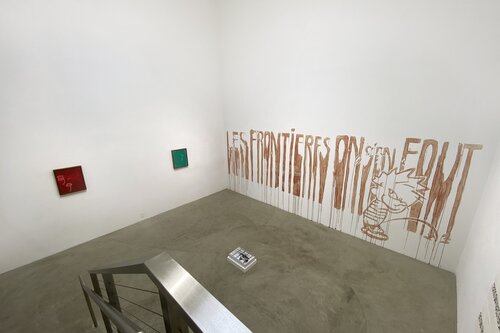
Yesterday-Tomorrow
Juan Capistran, Rakeem Cunningham, Aaron Sandnes, & Taravat Talepasand | March 21 – April 25, 2020
COLLABORATORS

